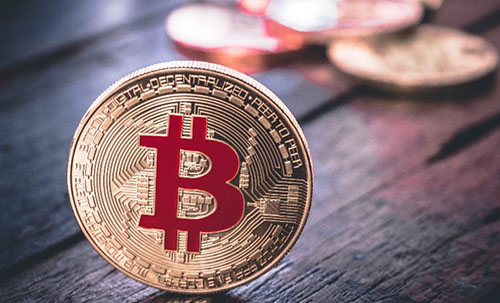Blockchain technology: transforming the future of banking

An AI-generated image, depicting the concept of blockchain.
18 Apr 2023
Blockchain technology in banking: how are banks using blockchain?
Blockchain technology, also known as distributed ledger technology (DLT), has rapidly gained popularity in recent years as a promising solution to many challenges in the banking industry.
What exactly is blockchain technology?
Blockchain technology is a decentralised, distributed ledger system that allows for secure and transparent transactions between two parties without the need for a trusted intermediary. The ledger consists of a series of interconnected blocks, each containing a list of transactions. Once a block is added to the chain, it cannot be altered, making it tamper-proof. The blockchain also uses cryptography to ensure that only authorised parties can access and validate transactions.
This technology has the potential to revolutionise the way banks operate, enhancing security, increasing efficiency, and potentially reducing costs. In this article, we will explore the benefits of blockchain technology in banking and some of its potential use cases.
Benefits of blockchain
There are many potential benefits of blockchain technology, including:
Decentralisation: Decentralisation (i.e. the lack of a single central authority or point of control) in blockchain often exists on a spectrum – from a fully decentralised public chain where anyone can host a validating node, to a partially decentralised permissioned chain which limits the public to a few nodes only. In banking, it is typically the latter. This makes it more secure in that it reduces the chance of breakdown due to a single point of failure.
Transparency: On a fully public blockchain (an open ledger), all transactions are visible to all participants of the network, creating a high level of transparency. While this is generally a benefit of blockchain technology, there are certain instances (especially in banking) whereby some degree of privacy is preferred.
Security: The blockchain is highly secure because it uses cryptography to protect data, making it difficult to tamper with or falsify records.
Efficiency: Blockchain technology allows for faster and more efficient transactions through automating and/or streamlining processes. For example, blockchain has enabled smart contracts, which are self-executing programmes.
Traceability: The blockchain allows for the tracking of assets and transactions from start to finish. This helps to reduce fraud and improve accountability.
Immutable: Once data is added to the blockchain, it is very challenging and costly to alter or delete it. This creates an almost-permanent record of all transactions, which helps to improve transparency and accountability.
Interoperability: Blockchain technology can be used to connect different systems and networks. This allows for seamless communication and data sharing between different organisations and systems.
Innovation: Blockchain technology is still in its early stages, with immense potential for innovation and new applications. This could lead to new business models and opportunities.
Benefits of blockchain in banking
The revolutionary impact of blockchain on banking is dependent on its innovative use.
One of the primary benefits of blockchain technology in banking is its ability to provide a secure and transparent way of recording transactions. In traditional banking systems, transactions are typically recorded in a centralised database. However, with blockchain technology, transactions are recorded in a partially decentralised network where only trusted participants can host the validating nodes. This makes it nearly impossible for a single point of failure to compromise the entire system, and helps to reduce the risk of fraud and cyber attacks.
Another benefit is its potential to increase efficiency and reduce costs. Traditional banking systems require intermediaries such as clearinghouses, custodians, and other third-party service providers, which can add significant costs and time to transactions. However, with blockchain technology, these intermediaries can be reduced, allowing for faster and more cost-effective transactions. This increased efficiency can lead to significant cost savings for banks and their customers.
Applications of blockchain in the banking sector
One potential use case for blockchain technology in banking is in the area of international payments and peer-to-peer remittances. Traditionally, international payments can be slow and expensive, often involving multiple intermediaries and high fees. However, with blockchain technology, international payments can be processed more quickly, in real time, and potentially at a lower cost. This could be especially beneficial for individuals and businesses that rely on cross-border payments.
Another potential use case for blockchain technology in banking is in the area of identity verification. Currently, banks rely on a variety of methods to verify the identity of their customers, including manual verification and the use of biometric technology. However, with blockchain technology, identity verification could be simplified and made more secure. Blockchain-based identity verification systems could provide a secure and almost tamper-proof way of verifying the identity of customers, which could reduce the risk of fraud and identity theft.
Other ways blockchain is used in the real world
The use of blockchain technology is not limited to the financial services sector. Here are some ways blockchain is shaping other industries too:
Blockchain technology is used in supply chain management to track and trace the movement of goods in the supply chain, making it easier to identify inefficiencies and prevent fraud. It also improves the current process by reducing the use of paperwork and/or trade documents to facilitate cross-border transactions.
In healthcare, blockchain technology is used to protect medical data by facilitating the secure transfer of patient records, strengthening data defences in an industry prone to breaches (from credit card theft to leaked genomic testing records). It is also used to make the pharmaceutical supply chain more robust by enhancing the traceability and reducing the counterfeiting of medicines.
In real estate, there are many use cases for blockchain technology, from asset tokenisation to smart contracts for mortgages. For most people, the most relevant example would be how it enables secure and transparent real estate transactions (e.g. buyer-seller and landlord-tenant payments), which can potentially eliminate the need for intermediaries and reduce the costs associated with buying and selling property.
Blockchain is even used in energy trading, to create secure and transparent peer-to-peer trading systems, which allow individuals and organisations to buy and sell energy directly. It can track and monitor transactions of assets, which in this case, is a unit of energy.
How will blockchain transform the future of the banking sector?
In conclusion, blockchain technology has the potential to transform the banking industry by providing increased security, efficiency, and cost savings. While there are still some challenges to overcome, such as regulatory issues and interoperability, many banks – like DBS – are already exploring the potential of blockchain technology and are investing in research and development to bring this technology into their operations.
At DBS, we have established two key blockchain-based businesses: DBS Digital Exchange (DDEx), one of the world’s first bank-backed exchanges providing participants (including accredited investors, financial institutions and family offices) access to security tokens and digital currencies, and Partior (a joint venture with Temasek and J.P. Morgan), an open industry platform for 24/7 multi-currency real-time payments, clearing and settlements, powered by blockchain technology.
Other ways DBS has leveraged blockchain technology include using it to improve our API solutions for corporate clients – such as, for bridging supply chain liquidity gaps and digitising trade processes. We have also partnered with the Singapore government on blockchain pilot projects such as Project Orchid and Project Guardian.
In fact, DBS CEO Piyush Gupta has said that he expects blockchain to power the world’s back office in the next decade or less.
Blockchain, decentralised finance (DeFi) and the role of banks
Blockchain technology has also made possible decentralised finance (DeFi), which seemingly conflicts with what banks do. DeFi systems are designed to operate independently of a regulatory framework; relying on smart contracts for peer-to-peer transactions. However, the situation is nuanced.
DBS CEO Piyush Gupta said, “Most DeFi evangelists will tell you that intermediaries like banks put in friction. So a dystopian future says you don’t need banks. The problem with a dystopian future is it’s not that easy to rely on an unknown algorithm to deal with everybody directly. At the extreme, it also raises questions of ‘Do you need nation states? Do you need governments? Do you need central banks? All of them are intermediaries.
“I don’t think the world is ready for all citizens to operate with one another without governments, societies and nations. Most governments will therefore be very wary of getting to that. How does the government do monetary policy? How do you manage the economy? How do you control interest rates? However, the utopian future is within the bounds of regulations, countries and governments. You start using the technology to make the improvements that are required in settlement, trade finance, mortgage and the back office. In that world, banks still have a role to play.”
As blockchain technology continues to evolve, it is likely that we will see more use cases and applications in financial institutions and the banking industry in the coming years.


